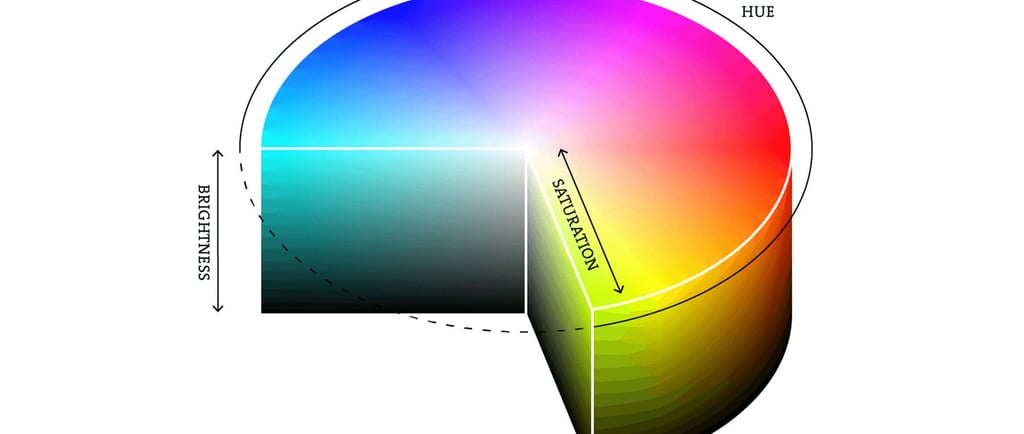HSB Color
HSB color mode describes colors by their hue, saturation, and brightness for intuitive selection and editing.
COLOR
Avinash
10/29/20251 min read


HSB color mode is an intuitive way to choose and adjust colors using three main parts: Hue, Saturation, and Brightness.
What is HSB Color Mode?
HSB stands for Hue, Saturation, and Brightness:
Hue is the main color we see, measured on a color wheel from 0 to 360 degrees (like red, blue, green, etc.).
Saturation is how vivid or pure the color is. At 100% saturation, the color looks very strong; at 0%, it looks gray and faded.
Brightness means how light or dark the color is, with 100% being bright like white, and 0% being dark like black.
Why Use HSB Color Mode?
Using HSB makes it easier to pick colors the way people naturally think about them: first by the type (hue), then how strong (saturation), and finally how light or dark (brightness). Unlike RGB, where you mix red, green, and blue numbers and might get unpredictable results, HSB gives you direct control over the color’s look and mood.
Design programs, like Photoshop, Illustrator, and even programming tools, often include HSB options so artists and designers can quickly make color choices that fit their vision.
Where HSB Is Used
Graphic design and photo editing for easy color changes.
Web and UI design for picking and matching colors.
Digital painting and animation, because it’s intuitive and flexible.
Example
Choosing a vivid blue: Set Hue close to 240, Saturation at 90, Brightness at 75.
Making a pastel pink: Hue near 350, low Saturation, high Brightness.
HSB color mode gives designers and creators a simple, flexible way to work with colors, matching how people naturally see and describe them.
